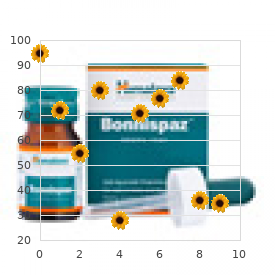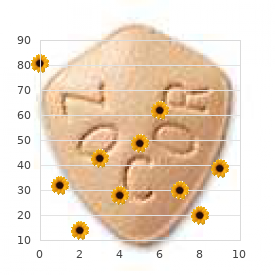Lansoprazole
Colleen Christmas, M.D.
- Director, Primary Care Leadership Track, The Johns Hopkins University School of Medicine
- Associate Professor of Medicine

https://www.hopkinsmedicine.org/profiles/results/directory/profile/0009020/colleen-christmas
However h pylori gastritis diet purchase 15 mg lansoprazole mastercard, they also belong to a group of drugs known as "performance enhancers" (1) gastritis symptoms pms safe lansoprazole 15 mg. Their first use among athletes was in the early 1950s mild gastritis diet cheap lansoprazole 30 mg buy on-line, most notably among male and female Soviet athletes competing internationally gastritis diet �������� cheap lansoprazole 15 mg buy online. The anabolic (tissue-building) effects of these steroids come from their binding to specific cellular receptors resulting in increased protein synthesis. In addition, they have an anti-catabolic effect by competitively binding to glucocorticoid receptors. The result is increased lean body mass (muscle) as well as increased muscle strength, especially if accompanied by a rigorous exercise regimen and adequate diet. Their use is most common in football, wrestling, basketball, track and field, swimming, weight training and bodybuilding. Performance also may be enhanced through increased aggressiveness and endurance resulting from steroid use. Anabolic steroids do not improve and may actually limit aerobic capacity, agility and athletic skill. Blood-doping (intravenous infusion of blood) is another technique used by athletes to improve performance. Some male adolescents take anabolic steroids not to enhance athletic performance but to improve their physical appearance through increased muscle mass and definition. Studies of anabolic steroid use among high school students show a prevalence rate of 5-11 percent for males and 1. A 1998 survey of junior high school students revealed that nearly four percent had used anabolic steroids (3). During the decade of the 1990s, anabolic steroid use among both males and females has increased (4). Another pattern of use is megadosing, with doses up to forty times greater than therapeutic doses. Pyramiding is a third technique in which doses are increased then decreased on a cyclic basis. Anabolic steroids can be purchased over-the-counter in many foreign countries and brought back into the U. However, many negative effects of chronic anabolic steroid use have been documented (Table 1 below). These primarily relate to its effects on growth and the hepatic, cardiovascular, and reproductive systems. Studies have shown that as many as 25 percent of users who inject steroids have shared needles (5). Anabolic steroid users are also more likely to use other drugs and experience their attendant risks. However, premature epiphyseal closure is irreversible and peliosis (purpura), hepatoma, baldness, clitoromegaly and voice changes will likely persist. Because anabolic steroid use can have multisystemic effects as described above, the differential diagnosis would at first appear to be a lengthy one. However, a history of athletic involvement in sports where muscle mass is important coupled with an unusual degree of muscle development should place anabolic steroid use at the top of the differential diagnosis list. Testosterone-producing tumors may have masculinizing effects on both males and females, but usually result in muscle-wasting and other signs of chronic illness. Once an adolescent who is using anabolic steroids has been identified, the pediatrician assumes the role of educator and counselor. Traditional drug treatment programs do not treat youths using anabolic steroids unless this use is part of a broader spectrum of substance use. Guidelines for the approach to the adolescent using anabolic steroids have been established by the American Academy of Pediatrics (2). In general, counseling should be provided in a confidential and non-judgmental manner.
Equipment required may include 10% buffered formalin gastritis diet ���������� purchase lansoprazole 30 mg otc, surgical scrub gastritis diet foods eat 15 mg lansoprazole buy overnight delivery, alcohol gastritis diet what to eat buy lansoprazole 15 mg free shipping, lignocaine 2% gastritis home treatment buy generic lansoprazole 15 mg line, needles and syringes, a Tru-cut biopsy needle, sterile disposable gloves, antibiotics and tetanus antitoxin. The biopsy can be performed in the standing animal or in the sedated animal in lateral recumbency. The skin is then moved caudally and the Tru-cut needle thrust through the cutaneous stab incision and through the intercostal muscles and pleura into the stroma of the Clinical Examination of the Respiratory System Figure 7. This ensures that the skin incision will not directly overlie the deeper wound and helps to minimise the possibility of pneumothorax. The cutting stylet of the Tru-cut needle is then advanced to cut the sample and the cover is advanced over the cutting stylet to retain the biopsy sample. Consideration should be given to prophylactic antibiosis and tetanus antitoxin administration. General condition Staring coat Loss of weight Milk yield Decreased Appetite Decreased Absent Demeanour Depression Dull Posture Recumbent Elbows abducted Slow to rise Neck extended Head lowered Head extended Ears drooping Breathing Laboured breathing/increased effort Shallow breathing Increased depth of breathing (Continued on p. The reticulum lies medial to the 6th to 8th ribs on the left side with the anterior wall at about the level of the elbow. The spleen lies on the anteriolateral aspect of the left side of the rumen beneath the last four ribs; this is shown in. The omasum lies in the lower part of the right anterior abdomen between the reticulum and anterior rumen to the left and the liver on the right, opposite ribs 7 to 11. The abomasum lies largely on the abdominal floor at about the midline or just to the right side, with the pylorus at about the level of the ventral end of the 11th or 12th rib. The left kidney is displaced by the rumen to the right side of the sublumbar region beneath the 3rd to 5th lumbar vertebrae. The right kidney is anterior to the left and lies ventral to the last rib and first two lumbar transverse processes, with the anterior pole surrounded by the liver. Applied anatomy the gastrointestinal system within the abdomen is composed of the forestomachs, the small intestine and the large intestine. The development of the newborn calf from a functional monogastric animal to a ruminant is illustrated by the increase in volume of the rumen relative to the abomasum with age as shown in Table 8. The forestomachs in adult cattle have a volume in the region of 150 litres with the relative proportions being rumen 70 to 80%, reticulum 5%, omasum 8% and the abomasum 7 to 15%. The large intestine is composed of the caecum, colon (ascending, spiral and descending) and rectum. The rumen and reticulum after feeding occupy the entire left part of the abdominal cavity, extending from the diaphragm at about the 7th rib to the pelvis. Normal behaviour and physiology In calves, a balanced diet regarding the quantitiy and quality of fibre and concentrate is required to ensure normal anatomical and functional development of the rumen. Dorsal sac of rumen Diaphragm Spleen 12 11 10 9 7 6 8 Ventral sac of rumen 13 Reticulum Figure 8. Rumenal fermentation may produce up to 600 litres of gas a day which is removed by eructation. Rumen movements are controlled by the vagus nerve and have four functions: mixing ingesta, moving ingesta, eructation and regurgitation for rumination. Functionally, rumen movements can be classified into primary (A) cycles, secondary (B) cycles and regurgitation movements. The primary (A) cycle mixes the ingesta within the rumen and occurs every 1 to 2 minutes. This movement causes gas to be displaced from the dorsal sac of the rumen to the cardia and eructated. Eructation contractions are independent of the mixing contractions and their rate is dependent upon the pressure of the gas in the rumen. Regurgitation results from an additional ruminal contraction interposed between normal mixing movements of the rumen. Avoluntary inspiratory effort is made with the glottis closed, the negative pressure of the thorax is greatly increased and the reticular fluid carrying some floating ingesta is carried up to the pharynx. The time of onset, the duration, number affected and the severity and the signs of disease observed.

Colony counts of 1 gastritis symptoms nhs direct 30 mg lansoprazole order with visa,000 to 10 mild gastritis symptoms treatment lansoprazole 15 mg order,000 on a catheterized specimen are suspicious and should be repeated gastritis symptoms diarrhoea purchase lansoprazole 15 mg free shipping. A specimen obtained by suprapubic aspiration should be sterile gastritis ka desi ilaj generic 30 mg lansoprazole with amex, so any growth of gram negative bacilli or any more than a few thousand gram positive cocci is considered a positive culture. Urine specimens obtained from young children by means of a bag applied to the perineum have a high rate of contamination. In fact, positive culture results from such a specimen are estimated to be falsely positives as much as 85% of the time (7). Lower tract disease typically does not cause fever, and does not result in renal damage. Upper tract disease classically causes fever, abdominal or flank pain, and in younger children and infants the nonspecific signs of irritability, poor feeding, malaise, failure to thrive, or vomiting and diarrhea. Signs of cystitis in older children or adolescents raise the possibility of chlamydial or gonorrheal urethritis. The presenting complaints of pyelonephritis must be differentiated from acute appendicitis, hepatitis, gall bladder disease, pelvic inflammatory disease, and other causes of acute abdominal pain. These assessments will guide the clinician to: await culture results before initiating antibiotic therapy; initiate empiric oral antibiotic therapy; initiate empiric parenteral outpatient therapy; or hospitalize for empiric parenteral therapy. Initial treatment decisions are made before culture results are available, and are therefore empiric. The goals of prompt treatment are eradication of the acute infection, symptom resolution, prevention of progression of disease. When therapy is initiated empirically, the clinical condition of the child is the primary factor considered. In every case, an adequate urine specimen for culture must be obtained prior to initiating therapy. A non-toxic child, who is feeding well, is well-hydrated, and for whom compliance and follow-up are not problematic, is appropriately managed with oral antibiotics and close outpatient follow-up. At any age, a child with signs of urosepsis, severe clinical illness, or significant dehydration should be hospitalized for parenteral antibiotic therapy and close clinical monitoring and supportive care. High risk children, such as those with immunologic impairment or known urologic abnormalities, may also need hospitalization. Some of these children may be managed with outpatient parenteral antibiotics, or even with oral antibiotics (7,11,12), if compliance and close daily follow-up can be assured. Children who are vomiting, or otherwise unable to reliably take oral medications, or for whom compliance is a concern, should be treated parenterally (either as inpatients or outpatients) until these issues are resolved (7,13). The initial choice of antimicrobials is guided by the chosen route of administration, known uropathogens, and any compromise of renal function of the patient. It is adjusted based on clinical response and results of culture and sensitivity testing. Parenteral therapy may be with a cephalosporin (ceftriaxone, cefotaxime) or ampicillin and/or an aminoglycoside (used with caution in the setting of impaired renal function). The oral drug nitrofurantoin is excreted in the urine, but it does not reach therapeutic concentrations in blood or tissues. The choice of initial oral empiric therapy involves consideration of spectrum, side effects, allergies, palatability, dosage schedule, and price. Amoxicillin should no longer be considered a first line drug for empiric therapy, due to increasing resistance of E. Clinical response to therapy is generally prompt, with improvement evident within 24-48 hours of initiating antimicrobial therapy. If clinical improvement is seen, and culture results indicate that the uropathogen involved is sensitive to the antimicrobial being used, routine repeat culturing of the urine after two days of therapy is not necessary. However, if sensitivities are unavailable, are intermediate or resistant, or the expected clinical improvement is lacking, repeat culture should be obtained. Page - 458 Children started on parenteral antibiotics may be changed to an oral antibiotic when they are clinically well enough to do so. That is, when they are non-toxic, well-hydrated, afebrile, and tolerating oral intake.

Biomechanical analysis of single- versus double-screw fixation in slipped capital femoral epiphysis at physiological load levels gastritis best diet generic lansoprazole 15 mg on-line. These three questions will help to narrow the differential diagnostic possibilities gastritis stomach pain lansoprazole 30 mg without a prescription. Leg length discrepancy gastritis symptoms patient lansoprazole 15 mg free shipping, Galeazzi sign (apparent thigh length difference) gastritis diet ���������� purchase lansoprazole 30 mg otc, waddling gait. Concentric reduction of femoral head, stability, remodeling and growth of acetabular cartilage. Although the etiology is unknown (commonly stated as idiopathic), most current theories involve vascular compromise of the femoral epiphysis. Increased blood viscosity, thrombophilia, and intraosseous venous hypertension have been proposed as mechanisms for vascular compromise. The proportion of head involvement forms the foundation for several classification schemes. Maintenance of the height of the lateral column of the femoral epiphysis appears to have the most prognostic significance in children in any age group. Whole head involvement or collapse of the lateral column by more than fifty percent carries a poor prognosis. Trendelenburg gait or antalgic limp, obligate external rotation of the hip with flexion, limited internal rotation of the hip. Slow degenerative process of the hip with few cases requiring prosthetic hip replacement. Garcia this is a 12 year old male who presents to your clinic with a 1 day history of pain and tenderness over his right ankle. He has been applying ice to the area since incurring the injury, with some relief of the pain. His exam is unremarkable except for the right ankle, which is positive for moderate swelling and tenderness over the lateral malleolus. Anterior drawer test of the right anterior talofibular ligament is negative for gross laxity. He is advised to rest the affected joint for today and is instructed to elevate his ankle and wear a compression bandage around the ankle. He is also instructed on performing pain-free range of motion exercises and light activity as tolerated. The ankle is one of the most common sites for acute musculoskeletal injuries, with sprains accounting for 75 percent of ankle injuries (1). The most common mechanism of injury in ankle sprains is a combination of plantar flexion and inversion (1). The ankle joint is a hinge joint normally permitting movement in one plane (dorsiflexion and plantar flexion). In addition, up to 18% of axial rotation of the talus may occur within the tibial mortise (3). These ligaments stabilize the ankle laterally, and are commonly injured in ankle sprains (2). History of the mechanism of injury allows the clinician to infer the pathologic status and structures involved (2). The signs and symptoms of ankle sprains are varying degrees of pain, tenderness, and swelling over the lateral aspect of the ankle (4). Other signs are mild to moderate ecchymosis, loss of motion and function, and mechanical instability (1). Careful physical examination should include inspection, palpation, ability to bear weight on the affected ankle and special tests (1,3). A positive "squeeze" test, which is occurrence of distal pain on compression of the fibula and tibia at the midcalf, may indicate the presence of a syndesmosis (the membranous ligamentous connections between the tibia and fibula) sprain (1). The positive findings of the affected ankle should be compared with the other, uninjured ankle (4). The Ottawa Ankle Rules for obtaining radiographs of ankle injuries have modified this approach. These rules recommend radiographs if there is bony tenderness in the posterior half of the lower 6 cm of the fibula or tibia. The differential diagnosis of acute ankle sprains can include fibular fractures (lateral malleolus), tibial fractures, osteochondral fracture of the talar dome, peroneal tendon subluxation, congenital tarsal fusion, talar fractures, calcaneal fractures, and subtalar subluxation (4). Range of motion and gradual ambulation result in faster recovery compared to total rest (4).
Effective 15 mg lansoprazole. Natural Cures For Acid Reflux (Diet): Top 10 Fruits To Cure Acid Reflux & Relieve Heartburn Fast.
References
- Matzinger P. The danger model: a renewed sense of self. Science. 2002;296:301-305.
- Virman R, Kolodgie FD, Burke AP, et al: Lessons from sudden coronary death. Arterioscler ThromB Vasc Biol 2000;20:1262-1275.
- Caulk JR: Megaloureter, J Urol 9:315, 1923.
- Diana JN, ed. Tobacco smoking and atherosclerosis. New York:Plenum Press, 1990.
